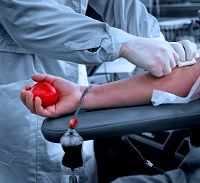Article
Safety and Efficacy Profile of rFIXFc Treatment for Hemophilia
Author(s):
The phase three studies, B-LONG and Kids B-LONG, examined outcomes with a hemophilia B therapy in adults and adolescents. Now an extension study went further to verify the findings and the results were presented at the 57th American Society of Hematology Annual Meeting (ASH 2015) in Orlando, Florida.

The phase three studies, B-LONG and Kids B-LONG, examined outcomes with a hemophilia B therapy in adults and adolescents. Now an extension study went further to verify the findings and the results were presented at the 57th American Society of Hematology Annual Meeting (ASH 2015) in Orlando, Florida.
The conventional treatment for hemophilia B, prophylactic treatment with replacement factor IX (FIX), usually involves intravenous infusions two to three times per week. A prolonged half-life version, recombinant factor IX Fc fusion protein (rFIXFc), was developed to cut down on the treatment frequency. But is it safe? And is it effective at reducing the frequency of bleeding episodes? Those are the key points that a collaborative team from South Africa, the United States, the United Kingdom, Brazil, Japan, and Australia set out to find.
- MD Magazine is on Facebook, Twitter, Instagram, and LinkedIn!
A total of 91 out of the 115 adults and adolscents who completed the interim studies moved on to the B-YOND extension study which ended in October 2014. There were four treatment groups with rFIXFc. Although patients could switch treatment groups at any time, most of them remained in the same one for the duration of the study.
- Weekly prophylaxis: ~20 to 100 IU/kg every seven days
- Individualized prophylaxis: ~100 IU/kg every eight to 16 days or twice monthly
- Modified prophylaxis: Personalized dosing for patients who did not achieve optimal prophylaxis with weekly or individualized prophylaxis
- Episodic (on-demand): Dosing based on type and severity of bleeding episodes
The median duration of treatment was 27.6 months. From the initial B-LONG study through B-YOND, patients were on rFIXFc for an average of 39.5 months.
“Median annualized bleeding rates (ABRs) were consistently low with rFIXFc prophylaxis,” the authors confirmed during their poster session at ASH 15. The median ABR for spontaneous bleeds and joint bleeds was less than one. The results showed that 87.3% of bleeding episodes were controlled with just one infusion and 97.2% with two infusions.
During this time, there were no inhibitors, serious allergic reactions, or vascular thrombotic events. The most common adverse effects recorded were headache (14%) and the common cold (9.7%). These types of effects, however, were considered “typical” for the population.
“B-YOND represents the most extensive exposure to a long-acting replacement FIX product to date,” the researchers wrote and they concluded that rFIXFc is safe and effective for long-term use for hemophilia B.
What to Read Next >>> More from the ASH 2015 Annual Meeting




